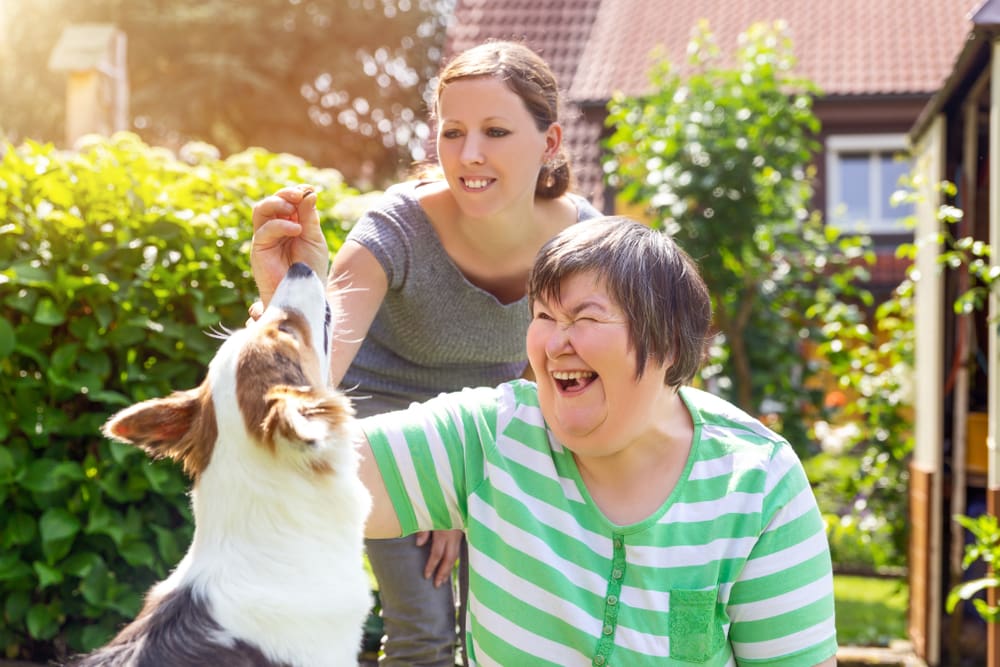 Written By: Lelia Wardwell Mander
Written By: Lelia Wardwell Mander
While the COVID-19 pandemic is hitting nursing homes hard, it is also posing enormous challenges to group homes for developmentally disabled people. Although many of these are neighborhood homes that are much smaller than large long-term care facilities, in this health crisis they still present risks to their special-needs populations and the staff members who support them. And people are dying.
Across the United States, COVID-19 had claimed the lives of at least 7,000 people residing in, or connected to, nursing homes as of the middle of April, according to a tally by The New York Times. Just in the New York City area, the pandemic’s global epicenter, at least 14 facilities had reported 25 or more deaths each. About a fifth of the country’s total COVID-19 fatalities have occurred in nursing homes, and more than 36,500 residents and employees at these and other long-term care facilities were known to have contracted the disease by mid-April, the newspaper reported. The total is probably far higher, given that many states, counties, and facilities had yet to submit statistics.
But group homes, which typically house a half-dozen or so developmentally disabled people in residential neighborhoods, are particularly vulnerable as well. It can be hard for their occupants to understand the crisis and to comply with measures such as social distancing that are designed to contain it. In New York State alone, 156 group home residents had died of COVID-19 by early April, according to the state’s Office for People With Developmental Disabilities.
“We’ve been trying to have staff wear masks, but very often people with autism don’t want to wear the mask themselves,” Janet Koch, CEO of Life’s WORC, told Fox News. The nonprofit provides residential and community services to people with autism and other intellectual disabilities. “So just everyday challenges become that much more difficult for the people working in our homes.”
Everyday challenges were already considerable for group home workers, long before the pandemic. Minimum-level pay often leaves homes with high turnover and chronic staffing shortages, and this has been exacerbated by the coronavirus crisis. Thinly spread employees often work at more than one home, increasing the risks of contracting—and spreading—infection, both to residents and to their families. Group home residents often have underlying conditions that make them more susceptible to the novel virus.
While group home staff members are considered essential workers, they often lack the equipment they need to protect themselves and their clients, including masks, gowns, goggles, and even hand sanitizer.
Group home operators say their hands are tied, complaining that they have long been starved of sufficient state and federal funding, and that the pandemic is adding to their fiscal straits. “Every year, we’ve had to fight and beg for money,” Deborah Mark, a spokeswoman for The Arc Montgomery County (Maryland), told The Washington Post. The Arc Montgomery County—a chapter of The Arc of the United States—says it had 77 client-service vacancies in its 36 group homes even before the pandemic struck.
A coalition of agencies and advocates urged New York governor Andrew Cuomo to provide financial help to group homes, reporting that the coronavirus outbreak had forced them to exhaust their budgets on equipment and incentives for workers to stay on the job.
Meanwhile, families of group home residents feel helpless as they observe this deepening crisis, prevented by quarantines from visiting their loved ones. Their absence can only add to the stress of residents who are struggling to grapple with unsettling changes in their routines and environment. This, in turn, presents yet another challenge to those hard-pressed employees battling for their clients on a mostly overlooked frontline of the coronavirus crisis.

Recent Comments